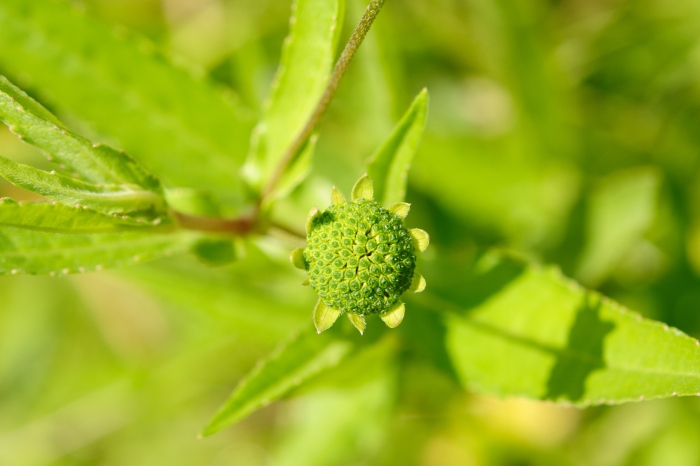False Daisy
(Eclipta alba)
False Daisy (Eclipta alba)
/
/

Cheng-Tao Lin
CC BY 4.0
Image By:
Cheng-Tao Lin
Recorded By:
Copyright:
CC BY 4.0
Copyright Notice:
Photo by: Cheng-Tao Lin | License Type: CC BY 4.0 | License URL: http://creativecommons.org/licenses/by/4.0/ | Rights Holder: Cheng-Tao Lin | Publisher: iNaturalist | Date Created: 2014-08-21T10:58:14-07:00 |



















Estimated Native Range
Summary
Eclipta alba, commonly known as false daisy, is an annual herb native to tropical and subtropical regions around the world, often found in moist, disturbed sites such as wetlands, riverbanks, and roadsides. It typically grows to a height of 0.3–0.9 meters (1–3 feet) with a spreading habit that can cover the ground densely. The plant features cylindrical, grayish roots and purplish stems that are covered with fine white hairs. Its leaves are lanceolate, hairy, and arranged in opposite pairs, and it blooms with small white flowers that have a yellow center, appearing from late summer to fall. The flowers are not particularly showy but are often visited by pollinators.
False daisy is known for its medicinal properties, particularly in traditional Ayurvedic medicine, and is used to treat a variety of ailments. It is also used as a green leafy vegetable in some cultures. In cultivation, it prefers consistently moist soil and can tolerate a range of light conditions from full sun to part shade. It is relatively easy to grow and maintain, making it suitable for water gardens, rain gardens, and as a ground cover in tropical and subtropical landscapes. However, it can become weedy and potentially invasive outside its native range, so caution is advised when planting it in areas where it is not native.CC BY-SA 4.0
False daisy is known for its medicinal properties, particularly in traditional Ayurvedic medicine, and is used to treat a variety of ailments. It is also used as a green leafy vegetable in some cultures. In cultivation, it prefers consistently moist soil and can tolerate a range of light conditions from full sun to part shade. It is relatively easy to grow and maintain, making it suitable for water gardens, rain gardens, and as a ground cover in tropical and subtropical landscapes. However, it can become weedy and potentially invasive outside its native range, so caution is advised when planting it in areas where it is not native.CC BY-SA 4.0
Plant Description
- Plant Type: Shrub, Herb
- Height: 0.3-1.6 feet
- Width: 1-3 feet
- Growth Rate: Moderate, Rapid
- Flower Color: Green, White
- Flowering Season: Summer, Fall
- Leaf Retention:
Growth Requirements
- Sun: Full Sun
- Water: High
- Drainage: Medium
Common Uses
Erosion Control, Low Maintenance
Natural Habitat
Native to tropical and subtropical regions around the world, often found in moist, disturbed sites such as wetlands, riverbanks, and roadsides
Other Names
Common Names: Yerba de Tago, White eclipta
Scientific Names: , Eclipta alba, Abasoloa taboada, Acmella lanceolata, Acmella lanceolata, Aganippea dentata, Amellus carolinianus, Anthemis abyssinica, Anthemis abyssinica, Anthemis cotula
GBIF Accepted Name: